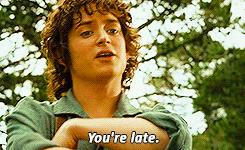
Wagner: Quantifying Literacy
Literacy has been an important part of my life since it began. So much of our culture revolves around reading that, although not everyone fits the known stereotype of a “reader,” we all do it avidly.
My parents read to me at bedtime before I started school and although I don’t have any memory of the actual experience, I can remember the books. I can remember their plots and their pictures. I can remember the characters and their feelings, even more than I can remember my own.
When I entered elementary school my dad began reading to me a series of wonderful chapter books called Hank the Cowdog. In second grade I started to write my own “novel” and stories and read my own chapter books. I’ve read incessantly throughout the following years. In high school I started to reread Harry Potter out loud with my mom, which we only finished my freshman year of college. And finally, after three years of fighting it, I decided on a second major in English because reading will inevitably be a part of my life and I might as well be decent at it.
However, reading is clearly much more complicated than we want it to be. Although I’ve always been what some would call a “reader,” it didn’t always appear that way. When I was in elementary school there was a reading test called the CBM, curriculum based measurement, during which a student was pulled aside and made to read aloud for a short timed session. As an academically self-conscious kid who had never so much as raised a hand in class, this test was my worst nightmare (and still pretty much is). I essentially failed the test and, despite my love of reading, I was placed in a pullout remedial reading class called Book Buddies that I endured once a week.
Clearly measuring literacy is hard. This has been evident throughout my own life and seems to me to be what Szwed was saying. He says, “…one must know what [language] means to its users and how it is used by them.” Having a child read out loud while an adult stares at them with clock counting down does not demonstrate that child’s literacy. Forcing a high school student to read and analyze something that has been labeled a classic does not necessarily demonstrate that student’s literacy. There is an incredible number of factors that must be taken into account when discussing literacy. As I read Szwed I was increasingly interested in what he has to say about the vast types of literature, their context and applicability, and the role motivation plays with regards to literacy.
He stresses the point that, “assumptions are made in educational institutions about the literacy needs of individual students which seem not to be borne out by the students’ day-to-day lives. And it is this relationship between school and the outside world that I think must be observed, studied, and highlighted.” School is intended to prepare students for the “real world,” an incredibly absurd idea to begin with. However, if schools don’t take into account what their “real world” looks like, or more importantly what it will potentially look like when students graduate, it is unable to do its job. If schools desire to create literate students, they first need to understand how “real world” literacy looks, in all of its unconventionality. Szwed makes this point throughout the reading but two specific quotes I enjoyed were when he states, “…nor can we make the easy assumption that certain media are responsibly for a reduction of use of another medium” and “the focus should be on the school and its relation to the community’s needs and wishes.”
Right now this idea seems to be most relevant in relation to the idea of digital literacy, at least to my generation. I’ve been interested in digital literacy since social media became a part of my life, about five years ago. I find this type of literacy fascinating. The impact new media has on our ability to communicate, to build communities, to increase or reduce empathy, and how this definition of literacy compares to the more traditional one are ideas to which we should be paying more attention and I think Szwed recognizes this. New media does not hinder the ability to interact with other mediums and it has become a vital part of our culture/community’s “needs and wishes.” Of course quantifying this type of literacy, and others, in a way that makes it curriculum worthy is a challenge that will be difficult to tackle.

 Website:
Website: